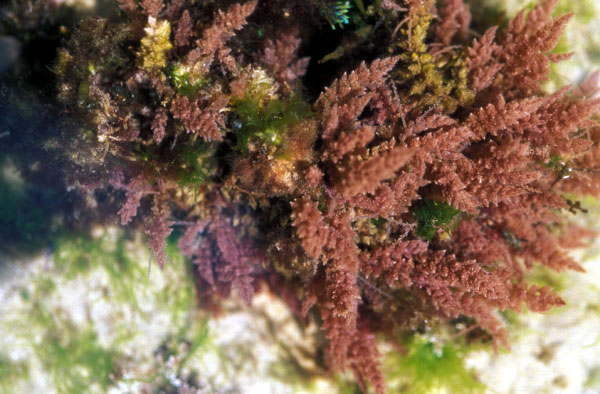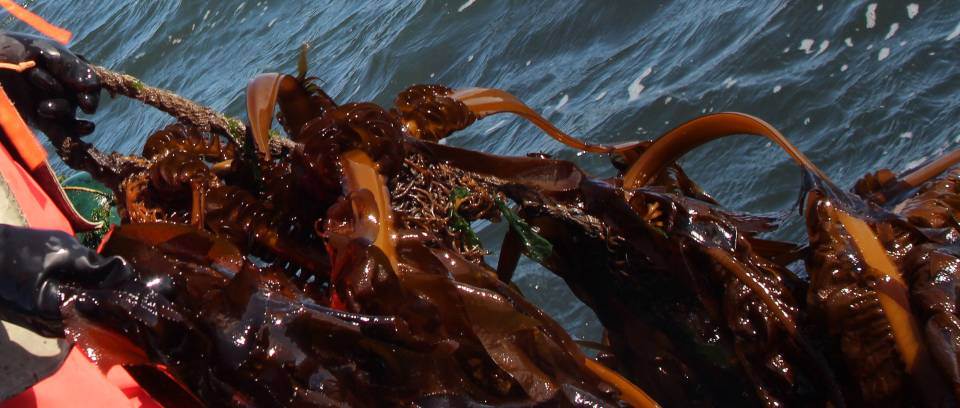In this study, seaweed extracts were extracted from two seaweeds viz. Sargassum swartzii (brown seaweed) (SSE) and Kappaphycus alvarezii (red seaweed) (KAE). The seaweed extracts SSE and KAE were comparatively analyzed to assess the growth, yield, phytochemical content and antioxidant capacity of Vigna unguiculata. It was observed that the 3% SSE spray significantly improved the shoot length (33 cm), number of leaves (28), yield (40 g/pot), total phenolic content (36.64 µg GAE/g FW), protein (0.42 mg/g) and flavonoids (7.36 µg QCE/g FW) compared to the control. The DPPH (2, 2-diphenyl-1-picrylhydrazyl) radical scavenging activity was also high in 3% SSE spray. The major antioxidant compound was identified using methanolic extracts of Vigna unguiculata through GC-MS analysis. The results suggested that application of brown seaweed extract (SSE) with the concentration of 3% can significantly improve the phytochemical content and antioxidant activity in Vigna unguiculata thus enhancing its nutritional quality.
Digital library
-
-
The red algal genus Asparagopsis (Bonnemaisoniaceae) is a significant resource for bioactive natural products. However, prior to domestication for commercial production, we need to understand the potential variation in growth and concentration of natural products between isolates of Asparagopsis and, beyond that, how these traits are affected by environmental conditions. Ten isolates of Asparagopsis taxiformis were collected from tropical and warm-temperate regions in Queensland, Australia, and identified by molecular barcoding of the mitochondrial intergenic spacer (cox2–3 spacer). The isolates were cultured at three temperatures ranging from the minimum of the warm-temperate region to the maximum of the tropical region. Growth rates and the concentration of natural products varied between the region of origin, between isolates within region and between temperatures. Growth differed by up to 50% between isolates, whereas the concentration of natural products differed more than tenfold. Growth rates were highest at the minimum temperature of 20.2°C, irrespective of region of origin, and were lowest at the maximum temperature of 28.1°C. Natural products were threefold higher in tropical isolates, and this variation was not correlated to growth. Consequently, targeting isolates with high concentrations of natural products should be the primary strategy for the domestication of Asparagopsis for biotechnology applications.
-
New mariculture technologies that use "appropriate" technology or rely on the natural productivity of the oceans to supply feed sources for seafood farming in coastal waters are being developed. These technologies may be feasible for small-scale commercial mariculture projects implemented by fishermen-farmers in developing countries. This article presents research data regarding the economic and social feasibility of the adoption of a new mariculture technology by artisanal fishermen in two small fishing villages in Antigua and the Dominican Republic in the Caribbean. The technology involves growing algae on offshore screens and feeding it to Caribbean spider crabs (Mithrax spinosissimus) raised in offshore cages. The research indicates that the adoption of crab mariculture by fishing crews is feasible because they have requisite values, skills, corporate resources, market relationships, and territorial rights. However, fishing crews may lack start-up capital and may require visible evidence of technological feasibility before adoption. If fishermen make a commitment to mariculture, their new activity may conflict with other relationships in their villages and they may catch fewer subsistence fish for local and urban markets.
-
Global production of farmed salmon and trout in saltwater was 1.82 million metric tons in 2007, three times more than any other farmed marine fish category. Development of this industry teaches that, for fish farming to succeed, containment systems must be easily deployed and operated and governments must create space in their coastal waters where farms can be located. Neither of these circumstances exists presently in the United States and, until this changes, other lessons that salmon farming teaches can only provide research or policy guidance. These include the importance of selecting a good fish to farm and making them “affordable” by being efficient. Salmon farmers achieved the latter through mechanization, industry scale, and a focus on good fish health and performance.Salmon farming also teaches that various plant and animal ingredients can be used in salmon feed and that its future growth will not be limited because salmon is a carnivore, as some have suggested. In fact, carnivorous fish, such as salmon, may turn out to be some of the most ecologically efficient species to farm. It is noteworthy, too, that it took 40 years to establish an industry with the capacity to produce 1.82 million metric tons of fish per year while the United States imported 2.36 million metric tons of seafood in 2008, 83% of its needs, much of it from foreign farms. If future international competition for these same supplies leads to national seafood shortages, it will be hard to replace it quickly with products from domestic aquaculture.
-
This study was conducted to analyze the weight of Kappaphycus alvarezzi and Sargassum polycystum mixcultured at different planting distances. Statistical analyses showed that planting distance was significantly influence the growth of K.alvarezzi and S. polycystum. Difference in weight gain between both species be due to the difference in their morphology which affect water motion and nutrient uptake. Higher weight gain of S. polycycstum was obtained at wider planting distance (35 cm). High , and at 30 cm for K.alvarezii. K.alvarezii was more susceptible to competition for the environmental factors compared to S. polycycstum. Higher weight gain of K.alvarezii obtained in this mix-culture with S.polycystum compared to the K.alvarezii which was singly cultured by previously several workers.
-
The development of spatial planning and management approaches is required to increase the space available for aquaculture production and to support the increasing global demand for food resources. During a European funded project, a large consultation exercise highlighted that stakeholder involvement is a necessity for suc- cessful planning and must be a continuous process as part of the development of a decision-making tool. In this study we present a decision support tool built on a web based dynamic interface to Geographic Information Systems which facilitates access to information related to site selection, environmental interactions and man- agement in aquaculture. It is derived from the AkvaVis concept and uses interactive functions that instantly display the results of spatial parameters chosen by the user. We adapted the tool for use within four case studies which deal with very different scales of aquaculture and issues related to aquaculture in four different countries. The key strengths of our tools relate to their capacity to manage and display spatial data from different sources in a transparent way, the ability to use and display a series of built-in indicators, and the long-term development potential made possible by the maintenance strategy of the tools, services and data depository. Consultations and meetings provided an accurate view of stakeholder expectations as well as feedback on the tool development and applicability, therefore helping the tool to meet the prerequisite for operational decision-making tools.
-
We took advantage of regional differences in environmental forcing and consumer abundance to examine the relative importance of nutrient availability (bottom-up), grazing pressure (top-down), and storm waves (disturbance) in determining the standing biomass and net primary production (NPP) of the giant kelp Macrocystis pyrifera in central and southern California. Using a nine-year data set collected from 17 sites we show that, despite high densities of sea urchin grazers and prolonged periods of low nutrient availability in southern California, NPP by giant kelp was twice that of central California where nutrient concentrations were consistently high and sea urchins were nearly absent due to predation by sea otters. Waves associated with winter storms were consistently higher in central California, and the loss of kelp biomass to winter wave disturbance was on average twice that of southern California. These observations suggest that the more intense wave disturbance in central California limited NPP by giant kelp under otherwise favorable conditions. Regional patterns of interannual variation in NPP were similar to those of wave disturbance in that year-to-year variation in disturbance and NPP were both greater in southern California. Our findings provide strong evidence that regional differences in wave disturbance overwhelmed those of nutrient supply and grazing intensity to determine NPP by giant kelp. The important role of disturbance in controlling NPP revealed by our study is likely not unique to giant kelp forests, as vegetation dynamics in many systems are dominated by post-disturbance succession with climax communities being relatively uncommon. The effects of disturbance frequency may be easier to detect in giant kelp because it is fast growing and relatively short lived, with cycles of disturbance and recovery occurring on time scales of years. Much longer data sets (decades to centuries) will likely be needed to properly evaluate the role of disturbance relative to other processes in determining patterns of NPP in other systems.
-
A series of wave tank tests was conducted at this Center CERC to determine the ability of a field of low specific gravity artificial seaweed to attenuate wave action. Wave gages were located on both sides of the seaweed field to measure wave attenuation. The field consisted of seven rows of seaweed with the rows spaced 3 meters apart. Ten distinct wave conditions were tested using periods ranging from 2.6 to 8.2 seconds and wave heights from 0.24 to 1.1 meters. Stillwater depth for all tests was 2.4 meters. There was a measureable level of wave attenuation for only the shortest period, 2.6 seconds. For the 2.6-second period, the reduction in wave height on passing through the seaweed field was about 12. This study shows that, for the width of field tested, the low specific gravity artificial seaweed is not effective in attenuating wave energy at wave periods commonly found in the ocean or other large bodies of water.
-
Rapid economic development and increasing population in China have exerted tremendous pressures on the coastal ecosystems. In addition to land-based pollutants and reclamation, fast expansion of large-scale intensive mariculture activities has also brought about additional effects. So far, the ecological impact of rapid mariculture development and its large-scale operations has not drawn enough attention. In this paper, the rapid development of mariculture in China is reviewed, China's effort in the application of ecological mariculture is examined, and the vulnerability of marine ecosystem to mariculture impact is evaluated through a number of examples. Removal or reduced large and forage fish, due to both habitat loss to reclamation/mariculture and overfishing for food or fishmeal, may have far-reaching effects on the coastal and shelf ecosystems in the long run. Large-scale intensive mariculture operations carry with them undesirable biological and biochemical characteristics, which may have consequences on natural ecosystems beyond normally perceived spatial and temporal boundaries. As our understanding of possible impacts of large-scale intensive mariculture is lagging far behind its development, much research is urgently needed.
-
Seaweeds are indiscriminately said to contain significant amounts of vitamin C, but seaweeds are a diverse group, which may limit the ability to generalize. Several studies have been performed on vitamin C in seaweed, and this review covers these findings, and concludes on how much vitamin C is found in seaweeds. A systematic review of vitamin C in 92 seaweed species was conducted followed by analyzing the 132 data entries. The average vitamin C content was 0.773 mg g −1 seaweed in dry weight with a 90th percentile of 2.06 mg g−1 dry weight. The vitamin C content was evaluated based on taxonomical categories of green, brown and red seaweeds (Chlorophyta (phylum), Phaeophyceae (class), and Rhodophyta (phylum)), and no significant differences were found between them. The vitamin C content was compared to other food sources, and this showed that seaweeds can contribute to the daily vitamin C intake, but are not a rich source. Moreover, seasonal variations, analytical methods, and processing impacts were also evaluated.





